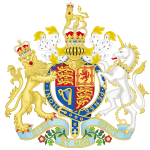- Counterfeiting Coin Act 1741
-
The Counterfeiting Coin Act 1741 (15 Geo.2 c.28) was an Act of the Parliament of Great Britain which made it high treason to counterfeit silver, copper or brass coins (counterfeiting brass or copper coins had previously only been a misdemeanor). Its long title was An act for the more effectual preventing the counterfeiting of the current coin of this kingdom, and the uttering or paying of false or counterfeit coin. It has since been repealed.
Contents
Reason for the Act
Section 2 of the Act began with an explanation for why the Act was necesssary:
“ ...and whereas the uttering of false money, knowing it to be false, is a crime frequently committed all over the kingdom, and the offenders therein are not deterred, by reason that it is only a misdemeanor, and the punishment very often is but small, though there be great reason to believe that the common utterers of such false money are either themselves the coiners, or in confederacy with the coiners thereof... ” Provisions
Offences
Sections 1, 2, 6, 7 and 8 of the Act came into force on 29 September 1742.
Section 1 made it high treason to "wash, gild or colour any of the lawful silver coin called a shilling or a sixpence, or counterfeit or false shilling or sixpence," or alter such a coin to make it look like a "lawful gold coin called a guinea" or half-guinea, or to file, alter, wash or colour "any of the brass monies called halfpennies or farthings, or to make those coins look like a shilling or sixpence. The last part of this section was amended by the Counterfeiting Coin Act 1797 to extend it to all copper coins ordered by royal proclamation to be current in the realm, not just halfpennies and farthings.
Following the words quoted above, section 2 continued to impose a mandatory minimum sentence of 6 months' imprisonment for uttering a false coin, knowing it to be false. On release the offender then had to provide sureties to be of good behaviour for another 6 months. For a second offence, the punishment was 2 years' imprisonment followed by another 2 years of good behaviour under surety. A third offence was a felony, punishable with death by hanging.
Section 3 provided that a person who committed an offence under section 2 and then committed the same offence again within 10 days, or was found in possession of more counterfeit money within 10 days was to be deemed "a common utterer of false money" and sentenced to 1 year imprisonment and then provide sureties for his good behaviour for another 2 years. If a person convicted of this offence ever uttered or tendered false coin in payment again, he was guilty of felony without benefit of clergy.
Section 6 made it a crime to "make, coin or counterfeit any brass or copper money, commonly called a halfpenny or a farthing," to be punished with 2 years' imprisonment followed by providing sureties for another 2 years' good behaviour.
Other matters
Section 4 provided that there was to be no corruption of blood for offences under the Act.
Section 5 stated that the same rules of procedure and evidence which applied to already existing crimes of counterfeiting coins were to apply to crimes under this Act, except that a time limit of 6 months applied to starting a prosecution for treason or felony under the Act.
Section 7 stated that anyone who apprehended someone for treason or felony against the Act, or for an offence under section 6, was to be given a reward for each person convicted: 40 pounds for each traitor or felon, and 10 pounds for each person offending against section 6. The reward was to be paid by the sheriff of the county within one month of the conviction. If the sheriff failed to pay then he was to forfeit double the reward money, plus treble the costs of suing him, which would all be paid to the informer.
Section 8 said that anyone who committed an offence against the Act but who then provided information leading to the conviction of two or more other offenders was to be pardoned.
Generally speaking, the rules of evidence and jurisdiction in the 18th century were that what happened in one county could not be proved in a court in a different county. However section 9 permitted a previous conviction under the Act in one county to be proved in a court in another county by a certificate signed by the court clerk.
Section 10 increased the fund for prosecuting counterfeiters from £400 to £600 per annum. (This fund had been set up by the Act of 7 Anne c.24, section 4, in 1708.)
See also
United Kingdom legislation Pre-Parliamentary legislation Acts of Parliament by states preceding
the Kingdom of Great BritainActs of the Parliament of England to 1483 · 1485–1601 · 1603–1641 · Interregnum (1642–1660) · 1660–1699 · 1700–1706
Acts of the Parliament of Scotland
Acts of the Parliament of Ireland to 1700 · 1701–1800Acts of Parliament of the
Kingdom of Great Britain1707–1719 · 1720–1739 · 1740–1759 · 1760–1779 · 1780–1800
Acts of Parliament of the United Kingdom of
Great Britain and Ireland and the United
Kingdom of Great Britain and Northern IrelandChurch of England Measures Legislation of devolved institutions Acts of the Scottish Parliament
Acts and Measures of the Welsh Assembly
Acts of the Northern Ireland Assembly / of the Northern Ireland Parliament
Orders in Council for Northern IrelandSecondary legislation Categories:- Great Britain Acts of Parliament 1741
- Treason
- 1741 in Great Britain
- Acts of the Parliament of Great Britain
Wikimedia Foundation. 2010.

